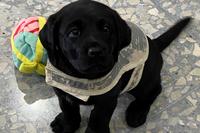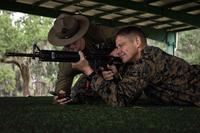Two equipment modifications designed to make the F-35 Joint Strike Fighter's ejection seat safe for use by lightweight pilots will wrap up testing by the second week of September, a source with knowledge of ongoing efforts told Military.com.
Air Force officials acknowledged last fall that pilots weighing less than 136 pounds were barred from flying the F-35A over fears that ejection with the plane's hefty $400,000 helmet, weighing in at more than five pounds, could result in serious neck damage.
Officials with the F-35 Joint Program Office are seeking a lighter helmet that may be introduced early next year, according to FlightGlobal reports, but also moving forward with proposed changes to the Martin-Baker US-16E ejection seat designed to protect pilots' necks and lessen the impact of ejection.
The two modifications under consideration are a "lightweight crew sequencer switch" that will slow parachute deployment by milliseconds after ejection, and a head support panel between ejection seat risers, Martin-Baker spokesman Richard Johnson told Military.com.
"Both have performed very well in tests," he said.
Testing on the equipment should be complete around Sept. 9, the source told Military.com. Martin-Baker executives are expected to brief the Joint Program Office and the Air Force as soon as the next week on the results of testing and to discuss a plan to retrofit existing F-35s with the equipment changes. If all goes well, those modifications will be standard in new-production F-35As by 2017.
Gen. Herbert "Hawk" Carlisle, head of Air Combat Command, told reporters at the Pentagon on Aug. 2 that the Air Force was still considering the possibility of swapping out the existing seat with a replacement, but added he was encouraged by early reports on the Martin-Baker fixes.
"I think they’ve made very good progress in solving the challenges that they had," Carlisle said. "And it appears, at least at first blush, they may have gotten to the full envelope in a representative manner, with some modifications to the seat. I’m awaiting that data. I haven’t seen it all yet. But it looks very good."
Johnson said Martin-Baker maintains its ejection seat is the right one for the aircraft.
"We're taking the Air Force's concerns seriously and we're certain that following completion of our test that the Martin Baker seat will be more than acceptable," he said.








